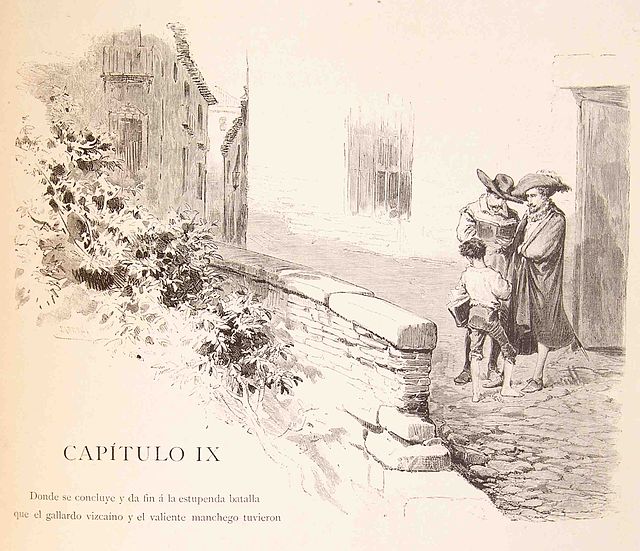A frame story is a literary technique that serves as a companion piece to a story within a story, where an introductory or main narrative sets the stage either for a more emphasized second narrative or for a set of shorter stories. The frame story leads readers from a first story into one or more other stories within it. The frame story may also be used to inform readers about aspects of the secondary narrative(s) that may otherwise be hard to understand. This should not be confused with narrative structure. A notable example is The Decameron.
One of the earliest frame stories is in the Odyssey, which begins with Odysseus telling stories to King Alcinous on the island of Scheria. Painting of Odysseus at the Court of Alcinous by Francesco Hayez, 1814-1815
One Thousand and One Nights frames many stories with a single narrator, Shahrazad; embedded within it are further framed sets of tales, such as those of Sindbad the Sailor. Illustration Sindbad the sailor and Ali Baba and the forty thieves by William Strang, 1896
The Return of Rip Van Winkle, painting by John Quidor, 1849
A story within a story, also referred to as an embedded narrative, is a literary device in which a character within a story becomes the narrator of a second story. Multiple layers of stories within stories are sometimes called nested stories. A play may have a brief play within it, such as in Shakespeare's play Hamlet; a film may show the characters watching a short film; or a novel may contain a short story within the novel. A story within a story can be used in all types of narration including poems, and songs.
In the Bible, Jacob has a dream about a ladder to heaven. Having a character have a dream is a common way to add an inner story within a larger story. (Painting by William Blake, 1805)
Cervantes finds the manuscript with the further adventures of Don Quixote. Illustration by Ricardo Balaca for the 1880 edition.





